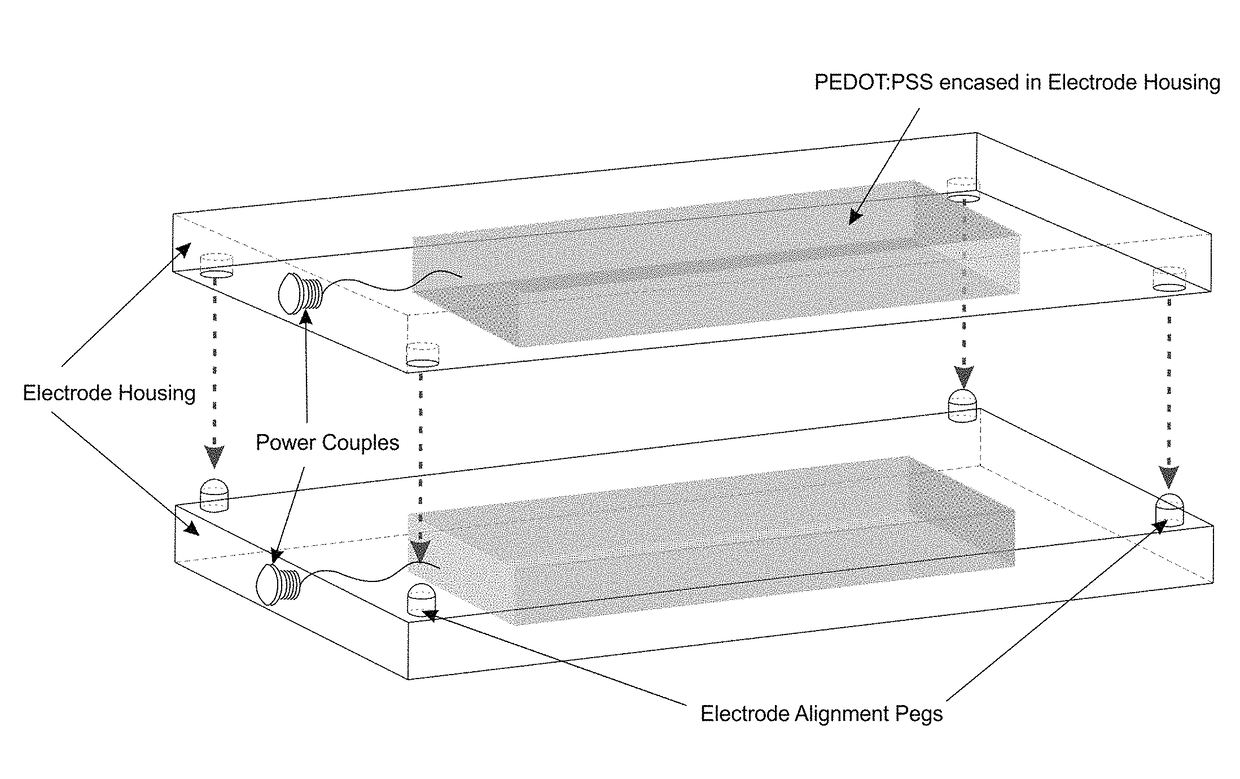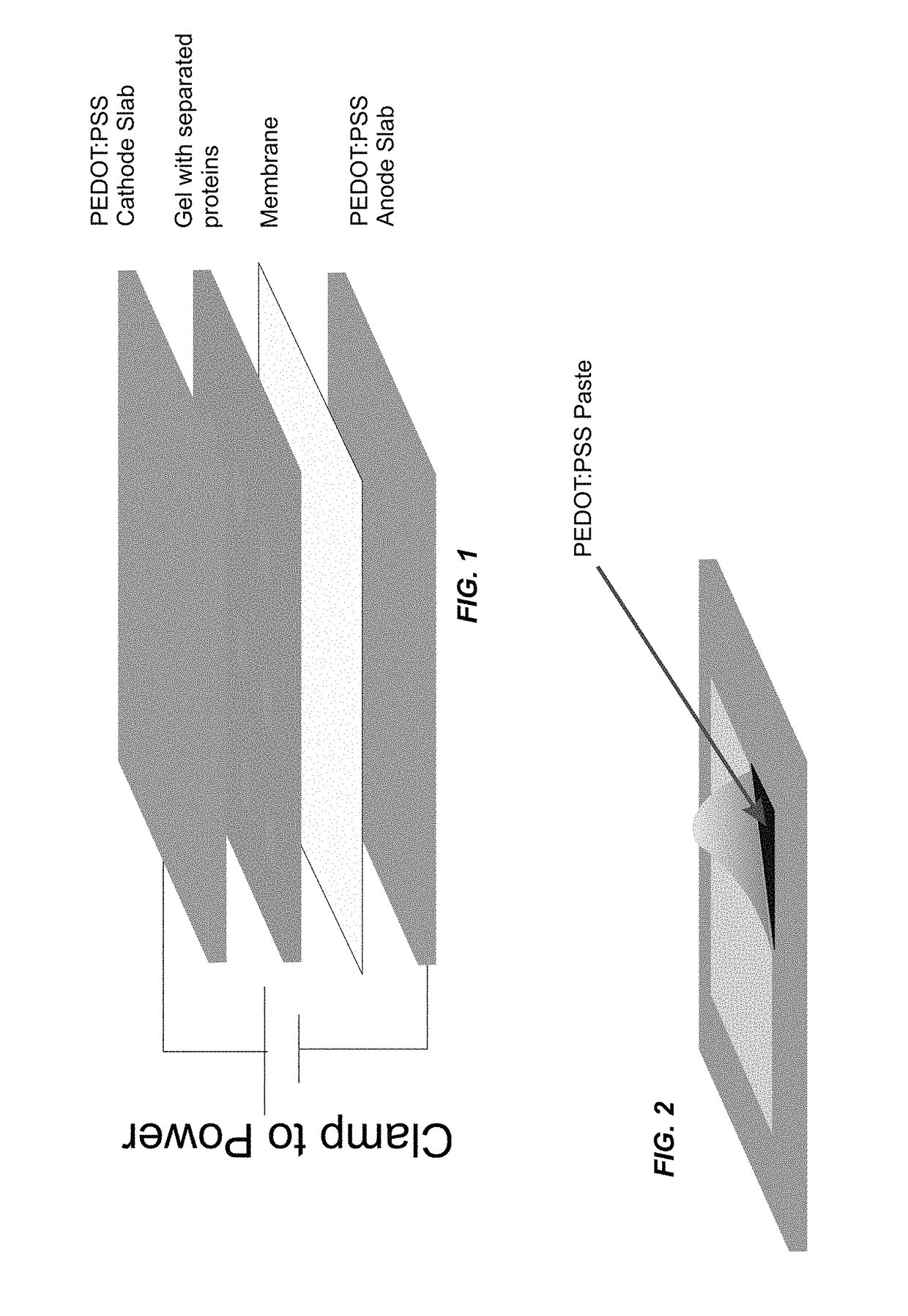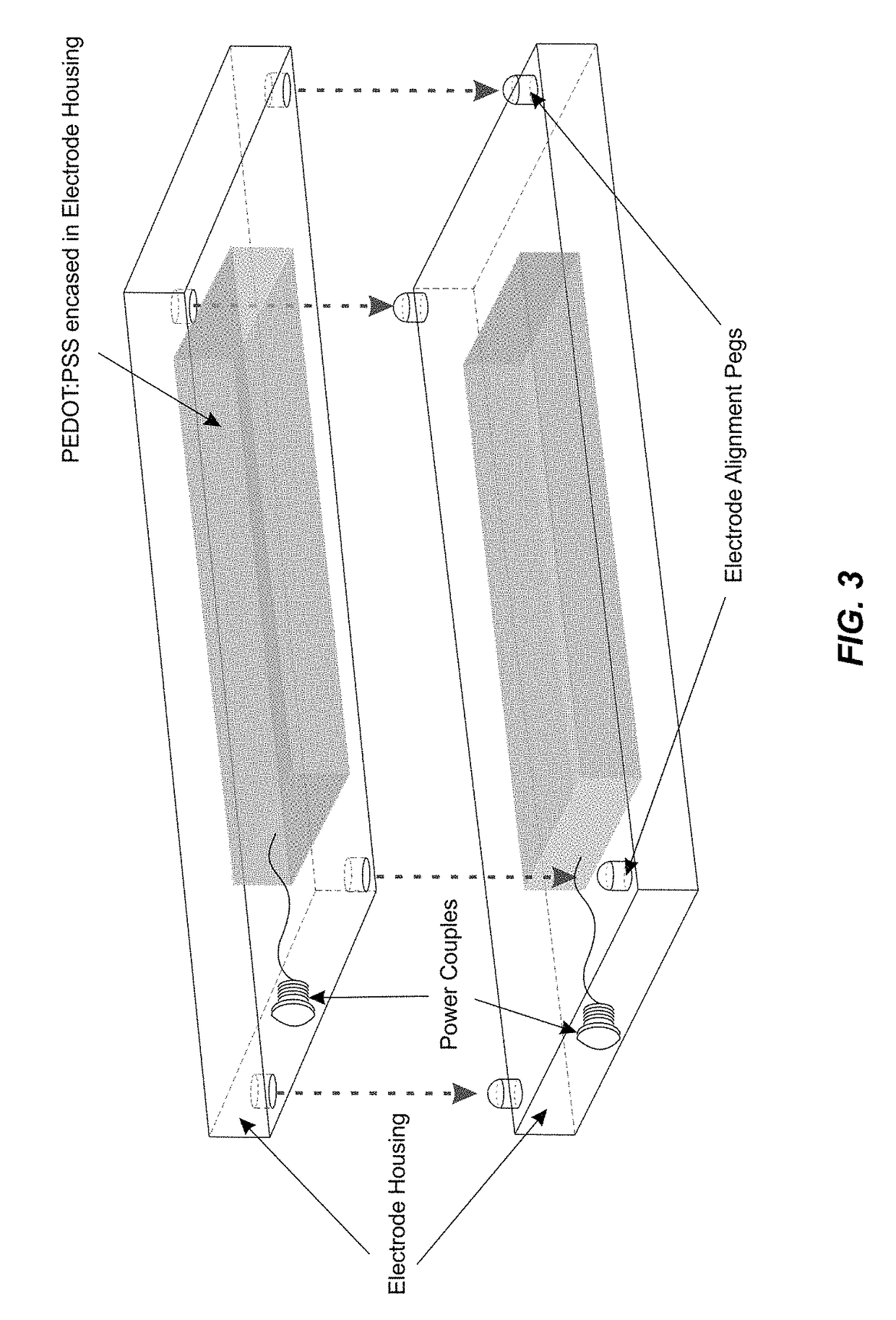Dry protein transfer
a technology of dry protein and transfer protein, applied in the field of dry protein transfer, can solve the problems of reducing the surface area of electrodes available for transmitting current, and reducing the efficiency of electroblotting
- Summary
- Abstract
- Description
- Claims
- Application Information
AI Technical Summary
Benefits of technology
Problems solved by technology
Method used
Image
Examples
Embodiment Construction
I. Introduction
[0023]It has now been discovered that efficient electroblotting of proteins and other biological species can be carried out using conductive polymer electrodes. Each electrode includes a conjugated organic polymer that can be oxidized or reduced upon application of an external electrical potential. The conjugated organic polymer is part of a conductive polymer blend such as PEDOT:PSS that not only conducts current, but also serves as a source or sink of electrophoretically migrating ions. These ions can penetrate the electrodes, associating with or dissociating from the conductive polymer blend as the oxidation state of the conjugated organic polymer changes. Due to the movement of solution ions into and out of the electrodes, and the free movement of charges (e.g., electrons) within the electrodes, electrochemical reactions are less prevalent on the electrode surfaces as compared with metal electrodes. Thus, complications of electroblotting arising from water electro...
PUM
| Property | Measurement | Unit |
|---|---|---|
| conductivity | aaaaa | aaaaa |
| conductivity | aaaaa | aaaaa |
| conductivity | aaaaa | aaaaa |
Abstract
Description
Claims
Application Information
 Login to View More
Login to View More - R&D
- Intellectual Property
- Life Sciences
- Materials
- Tech Scout
- Unparalleled Data Quality
- Higher Quality Content
- 60% Fewer Hallucinations
Browse by: Latest US Patents, China's latest patents, Technical Efficacy Thesaurus, Application Domain, Technology Topic, Popular Technical Reports.
© 2025 PatSnap. All rights reserved.Legal|Privacy policy|Modern Slavery Act Transparency Statement|Sitemap|About US| Contact US: help@patsnap.com



